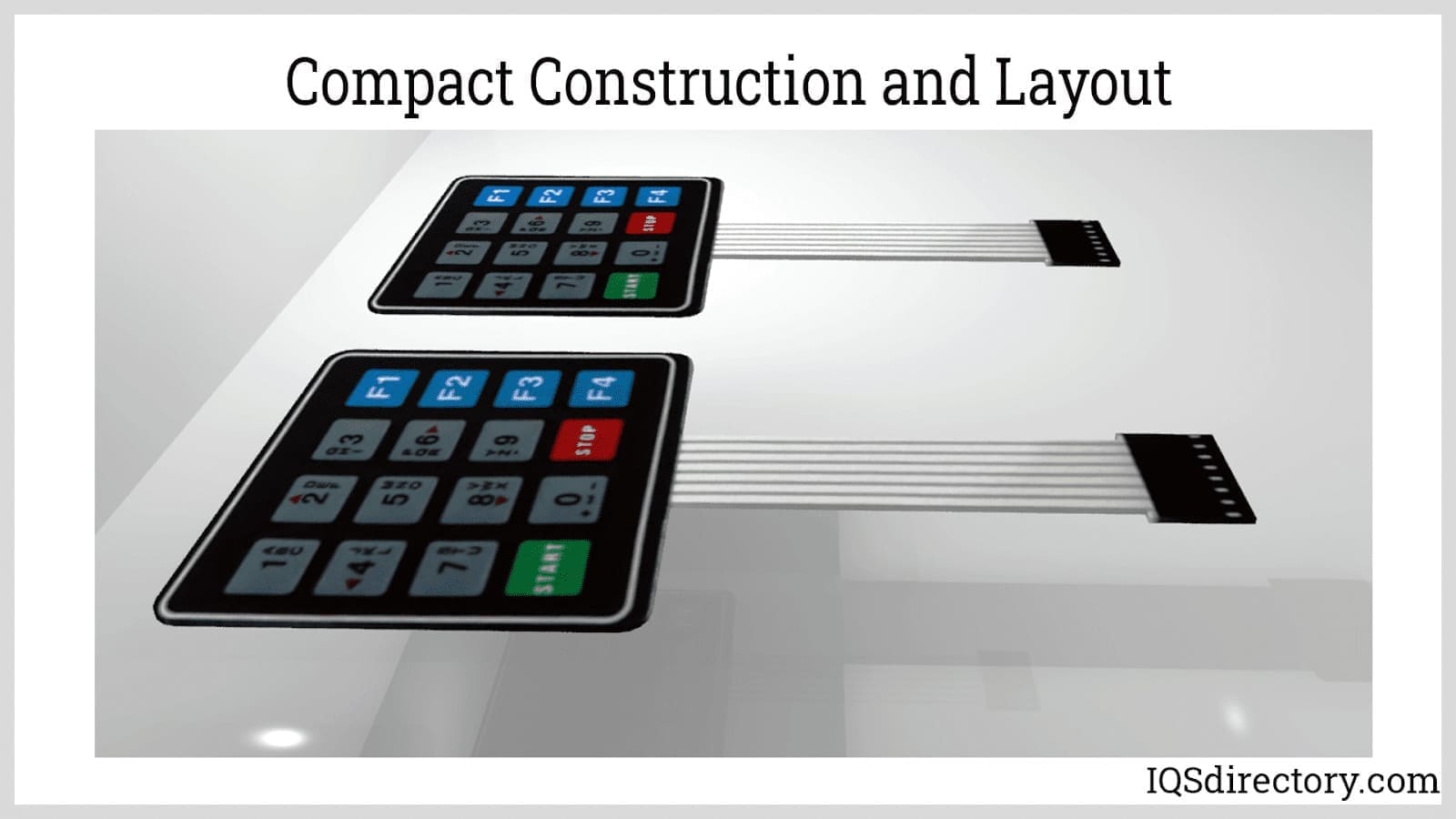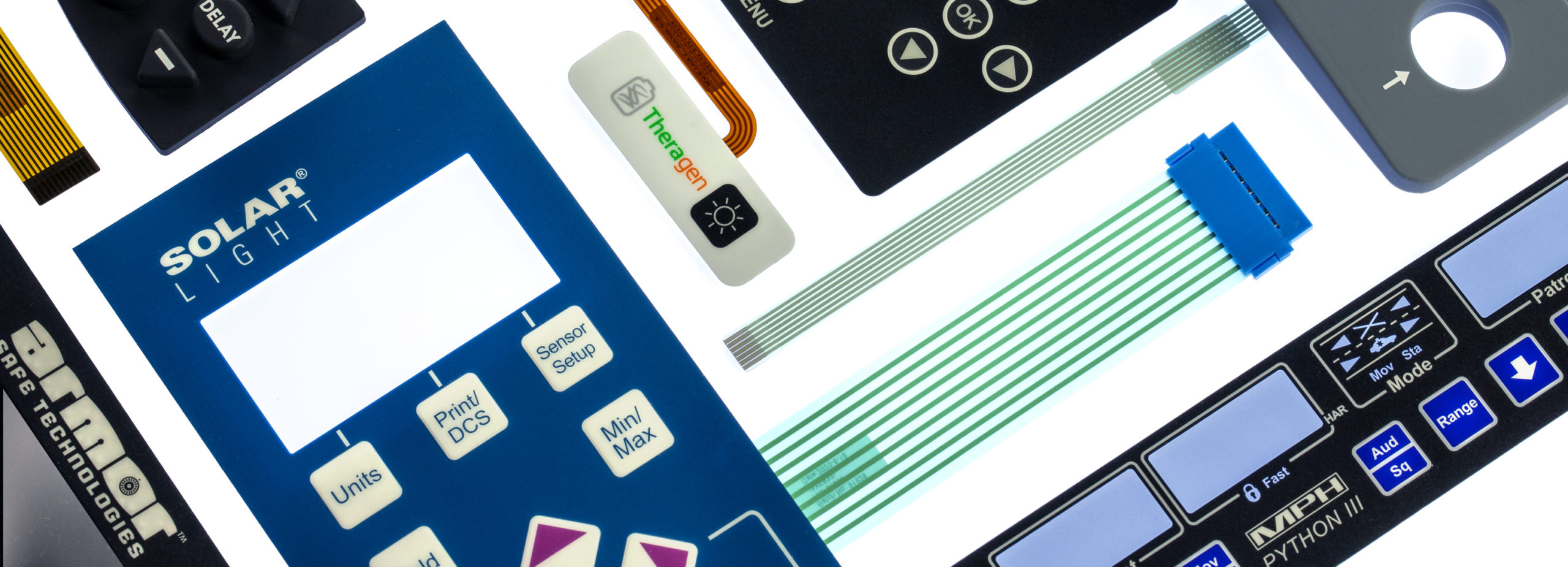Discover Just How Membrane Switches Feature and Their Duty in Modern Electronic Devices
Membrane Switches represent a sophisticated integration of technology and style within the realm of modern-day electronics, offering as essential user interfaces in many gadgets. Comprised of numerous layers, these switches use pressure-sensitive devices to promote individual communication. Their applications extend various industries, from consumer electronic devices to medical devices, highlighting their convenience and importance. Comprehending the intricacies of Membrane button performance and their more comprehensive implications in improving user experience invites more expedition into their style, benefits, and the innovative advancements forming their future in technology.
What Are Membrane Buttons?

Membrane buttons are distinguished by their longevity and resistance to ecological factors, such as dirt, wetness, and extreme temperatures. They can be customized with various graphics, colors, and responsive feedback options, improving individual experience while keeping visual allure - membrane switches. The consolidation of printed circuits allows for smooth assimilation right into gadgets, enhancing general capability.
The versatility of Membrane switches appears in their capacity to sustain both straightforward and intricate control features. They can incorporate features such as LED indicators and touch-sensitive innovation, providing to specific user demands. As technology remains to advance, Membrane Switches continue to be important for allowing instinctive and reliable interface, thereby playing a critical duty in the improvement of contemporary electronic tools.
Components of Membrane Switches
Membrane buttons are made up of numerous key elements that collaborate to create a useful and dependable user interface. The key elements consist of the visuals overlay, sticky layer, spacer layer, and conductive traces.
The graphic overlay works as the individual interface, usually printed on a versatile substrate such as polyester or polycarbonate. This layer not only provides visual charm but also consists of responsive feedback, visual hints, and safety attributes. Below the graphic overlay lies the sticky layer, which protects the button to the tool and guarantees durability versus environmental tensions.
The spacer layer is important for preserving the needed gap between the graphic overlay and the circuit layer. When pressure is used, this gap permits for the activation of the switch. The conductive traces, generally made from silver or carbon, develop the electrical paths that complete the circuit when the button is engaged.
In addition, a backing layer might be included for structural assistance and insulation. These components team up perfectly, guaranteeing that Membrane buttons are both straightforward and resistant, making them vital in numerous modern digital applications.
Exactly How Membrane Switches Job
Just how do Membrane Switches feature properly within electronic tools? Membrane Switches operate the concepts of pressure-sensitive modern technology, making use of a layered building that consists of visuals overlays, adhesive layers, and conductive aspects. When an individual uses pressure to the button, the leading layer warps, allowing the conductive elements beneath to make call and finish an electric circuit. This action triggers the desired feature within the tool.
The design of Membrane buttons is critical for their effective operation (membrane switches). The layers are diligently engineered to provide responsive feedback, resilience, and resistance to environmental aspects such as moisture and dust. The inclusion of domes-- small, raised areas within the button-- improves responsive feedback, supplying customers with a recognizable click sensation upon activation
Furthermore, Membrane buttons can be customized in terms of dimension, form, and graphics, making them ideal for numerous applications. They are often made use of in control panels, medical gadgets, and consumer electronic devices because of their sleek design and reliability. Generally, the effective performance of Membrane switches is essential in improving customer interaction and making sure seamless procedure in modern-day electronic tools.

Applications in Modern Instruments
Using their special layout and capability, Membrane buttons have actually ended up being important parts in a vast array of modern-day electronic devices. These functional user interfaces are used in consumer electronics, industrial tools, clinical devices, and vehicle controls, providing smooth customer communication.
In consumer electronics, Membrane switches are frequently discovered in devices like microwaves, cleaning machines, and other household devices, where they make it possible for instinctive control with a streamlined account. Their inconspicuous design helps with combination into portable gadgets, enhancing visual charm without compromising functionality.
In industrial applications, Membrane Switches offer as control panels for machinery, providing toughness and resistance to extreme atmospheres. Their capacity to stand up to moisture and pollutants makes them optimal for use in manufacturing and processing industries.
Medical gadgets additionally take advantage of Membrane buttons, which are developed to be very easy to clean and preserve, making certain health in clinical setups. They are typically used in diagnostic devices, patient surveillance systems, and mobile clinical tools, where reliability is vital.
Advantages of Membrane Switches
Among the essential benefits of Membrane switches is their convenience, which permits them to be tailored for a selection of applications across multiple markets. These buttons can be developed in various sizes and shapes, suiting special item requirements while supplying smooth assimilation into devices. Their slim profile makes it possible for a smooth and small design, commonly enhancing the aesthetic allure of electronic products.
Another considerable benefit is their longevity - membrane switches. Membrane buttons are normally immune to dirt, dampness, and chemicals, making them optimal for harsh environments. This durability expands their life-span contrasted to traditional mechanical switches, reducing the need for regular substitutes
In addition, Membrane Switches deal cost-effectiveness. The production procedure includes printing innovations that minimize manufacturing prices, especially for huge runs. This price, combined with low maintenance needs, makes my company them an attractive alternative for suppliers.

Final Thought
Finally, Membrane Switches represent a significant innovation in interface technology within modern electronics. Their split building, pressure-sensitive operation, and flexibility to different applications emphasize their relevance across multiple weblink industries. The durability and environmental resistance of Membrane Switches even more improve their charm, making them a favored choice for producers seeking trusted and personalized solutions. As the demand for intuitive and resilient user interfaces continues to expand, the role of Membrane switches in forming individual experience will unquestionably broaden.
Membrane Switches stand for a sophisticated integration of innovation and style within the realm of modern electronic devices, offering as crucial user interfaces in numerous devices.In the realm of contemporary electronic devices, Membrane Switches offer as vital parts that promote user communication with devices. As technology proceeds to advance, Membrane Switches continue to be crucial for making it possible for intuitive and efficient individual interfaces, consequently playing a crucial function in the development of modern electronic devices.
How do Membrane Switches function effectively basics within digital devices? On the whole, the effective functioning of Membrane switches is critical in improving user communication and making certain seamless procedure in contemporary electronic devices.